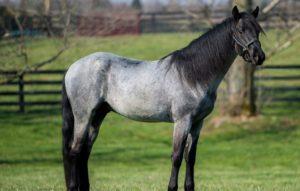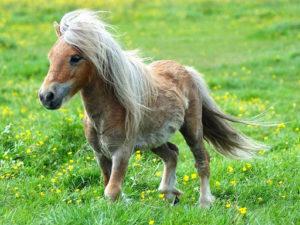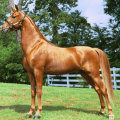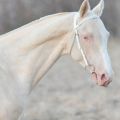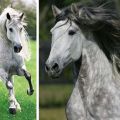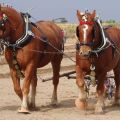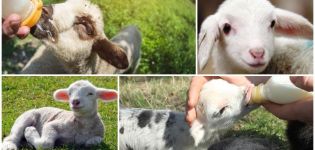The history of the emergence of the bay color of horses, description and varieties of color
When evaluating the colors of horses, it is not only the color palette of the coat of the body that is taken into account. The shade of the hair on the back of the neck, the tail, the pigmentation of the eyes, the color of the lower parts of the limbs also matter. The striking contrast of the brownish-golden body and the black, like coal, manes and tail always draw attention to the chestnut color horses. Horses are famous winners of sporting events, sources of inspiration for artists.
Where did the name of the suit come from?
There is no unambiguous opinion about the origin of the name. The popular version is from the verb "oppress", which means "brown" or "kindle". This is the visual impression that the shades of the chestnut horse make. It should be noted the varied color palette of the skin: light and dark brown, chestnut-golden or rich cherry color.
Characteristic
It is believed that there is a direct link between a horse's coat color and its performance, health and behavior.
Temper
All over the world, the bay horse is valued for its calm, docile nature. In comparison with other suits, the bay is well trained, friendly and attached to the owners, does not show aggression. Animals perfectly tolerate serious physical activity, do not show irritability or anxiety. That is why, given their excellent physical qualities, bay birds are in demand among horse breeders and regularly take part in exhibitions, parades and equestrian competitions.
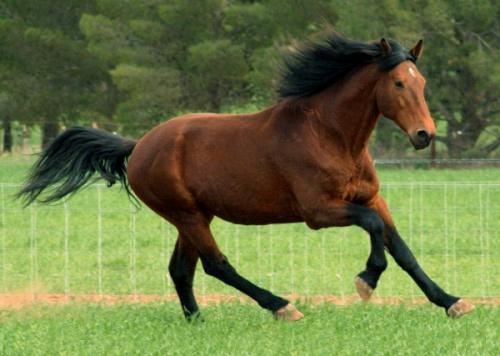
Exterior
The horse's color is formed by several indicators. The tone of the skin, shades of the iris of the eyes, mane, tail are taken into account. Distinctive features of bay horses:
- the skin of the body has mainly brown shades. The set of halftones can be varied: cherry brown, dark brown (karak), golden yellow;
- the parts of the legs below the hocks are always charcoal black;
- the charcoal tail and mane are striking in contrast against the background of the brown range of shades of the skin.
The hair on the back of the neck and tail does not fade under the influence of sunlight and always retains a charcoal black tint. The color palette of the coat of the body is different, therefore, the conditionally chestnut suit is subdivided into apprentices. At the same time, attention is paid to light cinnamon or light golden spots that are present in different parts of the equine body.
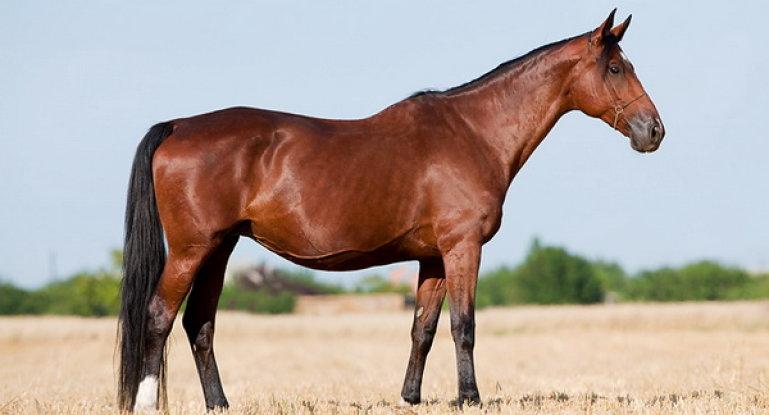
Varieties of bay suit
The suit is an important individual characteristic of the knights. Moreover, this distinctive feature should not be considered just a shade of the skin. This concept means a special kind of distribution of pigments based on a genetic basis.In this case, the peculiarities of the color of different parts of the horse's body must be taken into account.
In bay trees, the color palette of the body is distinguished by many brown undertones (from reddish brown to chocolate).
Horse breeders distinguish several popular groups of bay color:
- karakova - is considered the darkest type of bay. Peculiarities of color: black body, tail and mane, brown with a golden tint of markings near the eyes, under the arms, in the groin;
- for silver-bay horses, a rich brownish hue of the body is characteristic. At the same time, the color palette of the mane and tail changes gradually - from dark brown to light sandy or even whitish shades;
- for a dun horse, sandy-yellow with a golden tint of the body is characteristic. The lower parts of the limbs, mane and tail stand out brightly in black. Horses in apples look unusual when a grid of contrasting dark spots is visible on a golden background;
- the silvery dun horse is very rare. The color palette of body shades varies from cream, yellow-sand to deep brown.
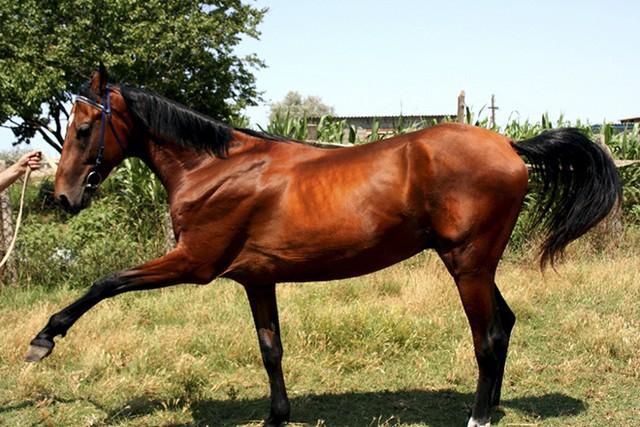
Of course, there are bay ones, which are difficult to attribute to a specific group. Such variants of colors of animals are distinguished into separate groups, which are called apprentices. Moreover, it is possible to clearly determine the color of the animal only after the first molt. In newborn foals, the color is indefinite, a constant color of the coat is established in animals older than 6 months.
Curious facts
If we start from the cost of horses, then bay animals have always been highly valued. The first places in the rating are occupied by representatives of this particular suit. The results of the auction of the late nineties are striking. $ 75 million - this is how much the bay stallion named Monju was valued at an auction in London.
The famous bay named Frankel was not put up for sale. But at the top of a sports career, experts estimated the animal at $ 200 million. Now the horse does not participate in races and is valued as a breeder. The offspring of the famous Frankel are not cheap, since they are highly valued by horse breeders.
The beautiful bay Gelinott has been a favorite of the races for several years. The horse took part in 87 races and won 54 races. For about eight years, the mare conquered the racetrack. It is noteworthy that after the end of his sports career, the horse was returned to the breeding plant. And Gelinott became a famous producer.
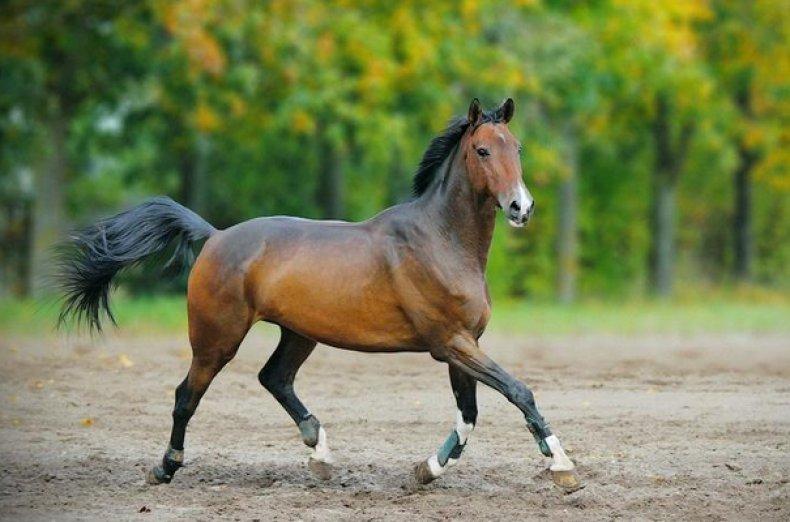
It is impossible not to mention the long-liver Billy. If the average life expectancy of horses is 25 years, then the bay gelding lived for 62 years. At the same time, the animal was engaged in towing barges along the river banks all its life. That is, Billy also had enviable good health.
Horses are frequent participants in cinematic filming. Especially in films of military, adventure themes. Gnedyh was filmed in the films "War and Peace", "The Elusive Avengers".
Features of care for a bay horse
Horses of any breed need full care. In the summer, horses spend most of their time outdoors. The main place for keeping animals is stables. As a rule, the premises are divided into stalls in which the horses are fed, cleaned, and left for short-term rest.
Fenced-off areas intended for permanent residence of bay are called stalls. When building a stable, it must be borne in mind that stalls with sides of 3.6x3.6 square meters are fenced off for racehorses. m, so that the animal can lie down freely to rest and there is enough room for the limbs. Rooms for keeping animals are thoroughly cleaned. They remove the dirty litter, disinfect the floor. It is important that bay horses always have a clean, dry floor. Otherwise, the likelihood of fungal infections of the hooves increases.
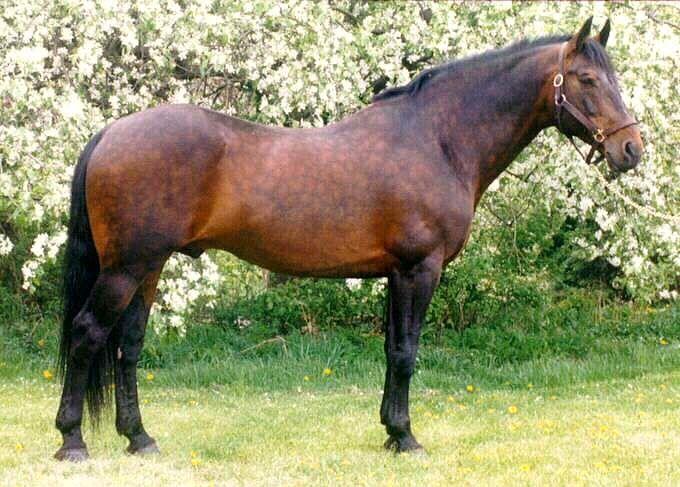
When compiling a diet, it should be borne in mind that fresh grass is the main type of food. Hay is also added to the diet - dried plants, cut grass. A complete diet, especially in winter, cannot be prepared without additives - concentrated feed. The horses are given fresh water twice a day. Every day, the animals are put in order: the mane and tail are combed with a plastic comb, they wipe their eyes and nostrils with a wet sponge. Fluffy brushes are used to wipe wool. Post-workout hair and skin care is important.
Important! When the saddle and harness are removed from the animal, it is checked that there are no rubbed areas on the skin. If necessary, the skin is lubricated with a special ointment.
Horses' legs require special care. After training, the hooves are washed with water from a hose, removing dirt. The limbs are examined to make sure there are no wounds, abrasions, sprains, or swelling. Horses must be shod. Hooves are examined daily, with the help of special hooks they are cleaned of dirt and stones. It is important not to miss the appearance of injuries, diseases.
Horse keeping is a responsible occupation. Animals need not only suitable stables, but also proper constant care, training, walking and communication with humans. With a lack of time or knowledge, you need to seek help from specialists.
Due to the wide palette of shades, majestic stature and beautiful exterior, bay horses have a lot of fans among equestrian sports fans. Spectacular animals are also frequent participants in exhibitions, parades and filming. Plus - bay ones are distinguished by excellent health and strong immunity.
